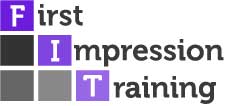A fascinating study by Talent Innovations has proved that John Gray, author of the 1992 bestseller “Men are from Mars, Women are from Venus” was indeed correct – there are fundamental differences between the genders and these differences are even more evident when it comes to leadership behaviour!
The study was based on the analysis of the 360 degree feedback results of 14,000
UK Leaders and Managers, to ascertain how men and women rate against 18 leadership competencies. The results show that men and women do indeed have two very different and distinct styles of leadership.
Women consistently score higher than men in the competencies of:
- Planning and managing activities – organising, prioritising and planning, in order to meet deadlines and deliver on promises.
- Respect and empathy for others – caring for others, effective listening and noticing how others are feeling.
- Taking personal responsibility – being open and honest, owning the consequences of your decisions and admitting mistakes.
Men consistently score higher in:
- Strategic vision – seeing the ‘big picture’ and the long-term impact of decisions, creating a strategic plan and considering the financial implications.
- Commercial focus – being ‘hard-nosed’, driving improved business results, striving to manage key financial metrics.
- Personal impact – making a strong first impression, expressing views with confidence and being visible across the organisation.
Women assess themselves and others differently than men do:
The study also reveals how the sexes differ in their assessments of each other. Women are inclined to be more generous in the way they judge their colleagues than men. Women rate other women higher in the competencies of leading teams, managing performance, the ability to communicate clearly, commitment to development and being customer-centric.
These competencies have a distinct social connection. For example, ‘leading teams’ involves energising people towards their goals, celebrating team successes, gaining commitment, inspiring a positive attitude and instilling a desire to succeed. ‘Managing performance’ includes delegating appropriately, setting the standards of performance and providing feedback.
Men rate other men higher in the ability to grasp complexities and innovation, which have little need for social sensitivity. Interestingly, women give themselves low scores for almost the same competencies in which men rate them poorly. It’s as if women’s self-perception is an amplified reflection of men’s views.
Women rate higher than men when it comes to admitting mistakes, saying ‘sorry’ and owning the consequences of their decisions. It could be that men don’t like to admit their mistakes to women, whereas women are less concerned about admitting their mistakes to others.
Men and women leadership styles are different:
So we can conclude that while the ‘male leadership style’ is commercial and visionary, the ‘female leadership style’ is more social. Women’s strengths are based around relationships, whereas men’s strengths are based around the rational aspects of achieving results. Men are more strategic but women – who are stronger at multi-tasking and interpersonal skills – may make better project managers.
Through the glass ceiling:
Men are typically stronger in the behaviours that are usually adopted by the main board of an organisation. On the face of it, this sounds like a possible explanation for the ‘glass ceiling’ and why women rarely reach the top of large corporates.
On the other hand, it can be difficult to demonstrate these behaviours if you’re not actually in a senior position. In other words, this could be a consequence of the glass ceiling.
Another reason why women may be under-represented in senior management positions is that men are also stronger in the behaviours needed for progressing one’s career. Many organisations value ‘commercial acumen’ over ‘having good quality relationships’. If a company has to make redundancies or extract a better price from a supplier – actions that would be taken for commercial gain, at the expense of relationships with employees and external partners – our data suggests that these tasks would be more challenging for a woman than for a man.
Implications of the study:
The results of the study should be of interest to anyone who has to interpret 360° feedback data. The true meaning of that data should always be considered in the light of the cultural and gender context. Also, the fact that women consistently score themselves much lower than men highlights the limitations of using self-assessments of employees’ strengths and weaknesses.
On one hand, the study highlights the general areas in which men and women need leadership development. Organisations could seek to improve performance by encouraging individuals to expand their bandwidth of style to overcome their weaknesses. For example, by encouraging men to develop more empathy and by encouraging women to become more commercial. For a man, you’d have to clarify the business benefit he’d gain by undertaking this development. For a woman, you’d have to highlight how the development would enhance her working relationships.
On the other hand, the study suggests, intriguingly, that the natural styles of men and women are complementary. Creating a balance of both types of leadership – by instilling diversity throughout the organisation, including at Board-level – could help an organisation to achieve peak performance.
Instead of fighting against our innate instincts, we should relish the true natural styles of all individuals and embrace the differences that exist between male and female leadership styles.
If men and women really are worlds apart, as John Gray suggested, then Earth – the planet in-between Mars and Venus – is surely the place where the two different leadership styles can join together to be truly effective….. Business Zone 2012

















